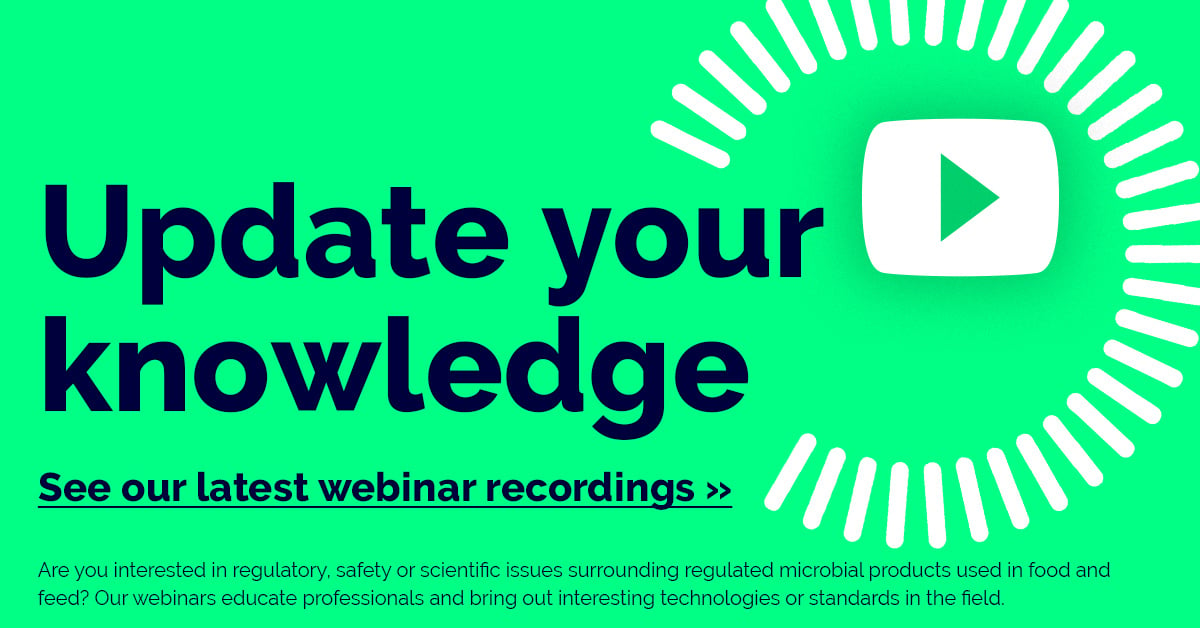
Enzymes have been used in food production for centuries and have been produced commercially since the mid-20th century. New ones are being introduced to the food chain though, which require food safety regulation. Even if they have been used outside Europe for ages.
Enzymes are usually added to food for a technological purpose in the manufacture, processing, preparation or treatment of foods to catalyse specific biochemical reactions. For example, they are used as processing aids in baking, brewing, winemaking, dairy processing and fruit and vegetable processing. Most enzymes are produced using microbial fermentation, but they can also be isolated from plant or animal material. (Kärenlampi and von Wright, 2016)
Regulatory framework
Before enzymes can enter the EU market, the enzymes must get into the European Community list of authorised food enzymes. For that, their safety for use in foodstuffs for human consumption must be assessed.
Here are the relevant food safety regulations in a nutshell:
- Regulation (EC) 1331/2008 of the European Parliament and of the Council established a common authorization procedure for food enzymes, food additives and food flavourings. It was implemented with Commission Regulation (EU) 234/2011, which was amended by Commission implementing Regulation (EU) 2020/1823 to introduce changes following the adoption of the Transparency Regulation.
- Regulation (EC) 1332/2008 laid down criteria and requirements concerning the assessment and authorisation of food enzymes. Commission implementing Regulation (EU) 562/2012 amended Regulation 234/2011 with regard to specific data required for risk assessment of food enzymes.
Regulation 1331/2008: The common authorisation procedure for food additives, food enzymes and food flavourings
Regulation 1331/2008 lays down the various stages of the authorisation procedure, the deadlines for those stages, the roles of the parties involved and the principles that apply. Once an application is submitted to the European Commission, they initiate the authorisation procedure and send it for a scientific opinion from EFSA (the European Food Safety Authority) providing the application is valid and applicable. After receiving EFSA’s opinion, the Commission makes the risk management decision. When a substance is authorised, it is included on a Community list, which is updated by the Commission.
Regulation 234/2011: How applications are made
Regulation 234/2011 defines the content, drafting and presentation of applications needed to update the Community list (also referred to as the Union list), how applications are checked for validity and the type of information that goes into an EFSA scientific opinion.
Briefly, an application should consist of:
(a) a letter;
(b) a technical dossier containing the administrative data, the data required for risk assessment, and the data required for risk management;
(c) a summary of the dossier.
The Regulation provides further details on each of these items. You should follow EFSA scientific opinion on the latest data requirements for the evaluation of food enzyme applications (see below the Chapter on scientific guidance). When you’re sending the application to the Commission, you also need to follow practical guidance (see below the Chapter on administrative guidance for applicants).
Regulation 2020/1823: More requirements for a more transparent risk assessment
Regulation 234/2011 was amended by Commission implementing Regulation 2020/1823 following amendments to the General Food Law, making EU risk assessment more transparent (see below the Chapter on current situation). Regulation 2020/1823 introduced the requirement of a public summary of the dossier and information concerning notification of the studies; an electronic submission system provided by the Commission; confidentiality requests; changes in the validity checking of the application; inclusion of the results of consultation in EFSA opinions; and a model letter accompanying an application.
Regulation 1332/2008: The sectoral food law for food enzymes
The criteria according to which substances can be included on the lists are laid down in sectoral food laws, such as Regulation 1332/2008 for food enzymes. It maps out a Community list of approved food enzymes; conditions of use of food enzymes in foods; and rules on the labelling of food enzymes sold as such. This Regulation covers enzymes added to food to perform a technological function, including enzymes used as processing aids. The scope does not cover enzymes intended for human consumption, for example, those used for nutritional or digestive purposes. Food enzymes used exclusively in the production of food additives or processing aids are also excluded from the scope. If the food enzyme is permitted for specific regulated use (e.g., dealing with fruit juice, lactoprotein or wine), it should comply with both Regulation 1332/2008 and any other relevant legislation. If a food enzyme falls within the scope of Regulation 1829/2003 on genetically modified food and feed, it should be authorised also in accordance with that Regulation.
Regulation 1332/2008 defines the content of the Community list of food enzymes: name; specifications (e.g., origin, purity criteria); foods to which it may be added; conditions of use; possible restrictions and specific labelling. If production methods or starting materials are significantly different or the production organism has undergone (further) genetic modifications after the food enzyme has been included in the list, it should be submitted for EFSA re-evaluation.
Regulation 562/2012: Derogation from submitting toxicological data
Regulation 234/2011 defines specific data required for risk assessment of food enzymes, including biological and toxicological data. Regulation 562/2012 amended this Regulation concerning the derogation (exemption) from submitting toxicological data, by acknowledging the QPS (Qualified Presumption of Safety) concept established by EFSA for the assessment of the safety of microorganisms. Importantly, if a microorganism has QPS status, the enzyme dossier doesn’t have to include toxicological data, unless the total enzyme production process gives rise to concern. Even though the derogation should not apply to genetically modified microorganisms, EFSA applies the derogation also to genetically modified QPS microorganisms.
Administrative guidance for applicants
Concerning the application procedure, practical administrative guidance has been given both by EFSA (sp.efsa.2021.EN-6471; sp.efsa.2021.EN-6509) and by the DG SANTE services (2021). The EFSA guidance EN-6471 deals with the processing of applications for all regulated products. The EFSA guidance EN-6509 and the DG SANTE guidance specifically deal with applications on food improvement agents, including food enzymes. All three guidance documents have been updated in March 2021 to cover the requirements of the new Transparency Regulation.
In general, the administrative guidance includes practical arrangements in pre-submission advice, notification of studies, submission of applications and the authorisation procedure. They include checklists, useful links and contact points. Once the Commission has received the application dossier, it verifies whether the application falls within the scope of the appropriate sectoral food law and whether the application contains all requested information. If the application is valid, the Commission asks EFSA to check whether the data are suitable for risk assessment and to provide an opinion.
Scientific guidance: what needs to be included in the application
The following guidance documents are valid for food enzymes:
- Guidance on the submission of a dossier on food enzymes (update 2021) (j.efsa.2009.1305); also an Explanatory note for the guidance on the submission of a dossier on food enzymes
- Characterisation of microorganisms used for the production of food enzymes (EFSA Statement, 2019)
- Exposure assessment of food enzymes; also Annex B – Process-specific technical data used in exposure assessment of food enzymes (efs24581-sup-0001-annex b)
The main source of scientific advice is the Guidance on the submission of a dossier on food enzymes (update 2021) by the EFSA CEF Panel. Explanatory notes have been added to the guidance wherever they have been considered useful. The guidance specifies what kind of data EFSA requires for risk assessment. Information requirements for dossiers may, however, vary depending on the food enzyme’s function and activity, the source material, toxic by-products and substances originating from the food enzyme production processes, intended food manufacturing processes, the intended use and the resulting level of human dietary exposure.
In principle, the dossier should include all the available data relevant to enable comprehensive risk assessment. The technical dossier consists of administrative data, data required for risk assessment, and data required for risk management. The food enzyme must be identified and characterised (name, properties, specifications, source material, stability). You must describe the manufacturing process and the proposed use, reactions and fate in food, and assess the dietary exposure. You should provide toxicological data if the enzyme is not derogated (see above Regulation 562/2012). In addition to the guidance and its Annex, EFSA provides tools for dietary exposure assessment.
The document on the characterisation of microorganisms used for the production of food enzymes describes the molecular characterization required for the enzyme production strain, and tests related to analysing the carry-over of the production strain or parts of it into the enzyme preparation.
- Whole genome sequencing is the golden standard for the safety assessment of food enzyme production strains. The genome serves as the basis for several key characteristics that must be included in the safety assessment: the unequivocal identification; screening for antimicrobial resistance (AMR) genes and virulence factors; and looking for pathways possibly leading to toxic metabolites. It is also necessary for primer design for the detection of the production strain and its DNA in the final product. Importantly, it can guide the subsequent safety tests.
- The final enzyme preparation should not contain production strain cells unless the strain has QPS status and is not genetically modified (GM), although it should be in any case in the applicant’s interest to ensure that their production strain is not cultivable from the product. Microorganisms used in the food chain should not add to the pool of AMR genes already present in the gut bacterial population or otherwise spread AMR.
The presence of acquired AMR genes is always considered a hazard and the product can be registered only if it can be demonstrated that DNA from the production strain is not detected in the product with a limit of detection of 10 ng DNA per g or mL of product. - If the product contains viable cells of the genetically modified production strain, the product falls under the Directive 2001/18/EC on the deliberate release into the environment of genetically modified organisms. Such products are currently not on the market and currently would require extensive environmental risk assessment and post-market monitoring. If the product contains DNA from the production organism, Regulation (EC) 1829/2003 may be applied. In this case, the product requires a lighter environmental monitoring programme than if it contained viable cells, but a similar post-market monitoring programme. No such enzyme products are currently authorized and the legal basis is still debatable.
Current situation of food enzymes
in the EU in 2021
The first set of food enzymes were submitted to the Commission with the deadline of 11 March 2015 and they are still under EFSA evaluation. National rules existing in some Member States like France and Denmark will continue to apply until the Community list of food enzymes is published. The Commission has established a Register, which lists all valid food enzyme applications submitted before the deadline, except for those withdrawn by the applicant. Applications submitted after the deadline are not included in the Register but will be processed in accordance with Regulation 1331/2008. The first Community list will thus be drawn up in a single step, even though EFSA opinions are published as soon as they are completed.
A new draft Scientific Guidance for the submission of dossiers on Food Enzymes was under public consultation until 9 May 2021. The new guidance will replace both the existing guidance and the explanatory note.
The General Food Law (Regulation 178/2002) has undergone a number of amendments. The amendment called Transparency Regulation (Regulation 2019/1381), most of which has applied since 27 March 2021, will influence the authorization of food enzymes, making the risk assessment process transparent to the public. The new provisions include EFSA’s general pre-submission advice, and the obligation to notify studies commissioned or carried out by business operators to support an application. It also introduced EFSA’s provisions on the public disclosure of all scientific data, studies and other information supporting applications, except for confidential information, early on in the risk assessment process, followed up by a consultation of third parties. For example, all enzyme dossiers and test results confirming characteristics and safety of enzyme products will become available for the public in the EU, unless EFSA grants confidentiality via a justified confidentiality request. To implement this Regulation, EFSA has developed an electronic submission system to the documents and provides pre-submission advice.
Biosafe will assist you in this process
The authorization process of food enzymes is not always straightforward. Regulations and guidance documents provide overlapping information, and it is not always easy to decide, which guidance to follow and the number of details one should provide. Legislation has shortcomings in terms of new genomic techniques, which can be applied in the development of food enzymes. Biosafe is an expert in the molecular characterization of food enzyme production strains and the analysis of viable cells and DNA in the product.
We are your pathway to safer
new food solutions

References
-
Commission implementing Regulation (EU) No 562/2012 of 27 June 2012 amending Commission Regulation (EU) No 234/2011 with regard to specific data required for risk assessment of food enzymes. OJ L 168, 21-23.
-
Commission implementing Regulation (EU) 2020/1823 of 2 December 2020 amending Regulation (EU) No 234/2011 implementing Regulation (EC) No 1331/2008 of the European Parliament and of the Council establishing a common authorization procedure for food additives, food enzymes and food flavourings. OJ L 406, 43-50.
-
Commission Regulation (EU) No 234/2011 of 10 March 2011 implementing Regulation (EC) No 1331/2008 of the European Parliament and of the Council establishing a common authorization procedure for food additives, food enzymes and food flavourings. OJ L 64, 15-24.
-
DG SANTE services, 2021. Practical guidance for applicants in the submission of applications on food additives, food enzymes and food flavourings, version 14. Fs_food-improvement-agents_guidance-auth-procedure.
-
Directive 2001/18/EC of the European Parliament and of the Council of 12 March 2001 on the deliberate release into the environment of genetically modified organisms and repealing Council Directive 90/220/EEC. OJ L 106, 1-38.
-
EFSA CEF Panel, 2009. Guidance on the submission of a dossier on food enzymes for safety evaluation (update 2021) (j.efsa.2009.1305). https://www.efsa.europa.eu/en/efsajournal/pub/1305
-
EFSA CEF Panel, 2014. Explanatory note for the guidance on the submission of a dossier on food enzymes. EFSA supporting publication 2014:EN-689.
-
EFSA CEF Panel, 2016. Panel statement on the exposure assessment of food enzymes. EFSA Journal 2016;14(11):4581, doi:10.2903/j.efsa.2016.4581.
-
EFSA CEP Panel, 2019. Statement on the characterisation of microorganisms used for the production of food enzymes. https://www.efsa.europa.eu/en/efsajournal/pub/5741
-
EFSA CEP Panel, 2021. Annex B – Process-specific technical data used in exposure assessment of food enzymes. EFSA Journal 2021;19(1):6370. Efs24581-sup-0001-annex_b.
-
EFSA CEP Panel, 2021. Scientific guidance on food enzymes (draft, public consultation ended 9.5.2021). DOI: 10.2903/j.efsa.201Y.xxxx
-
European Commission, 2020. Register of food enzymes to be considered for inclusion in the Union list. https://ec.europa.eu/food/sites/food/files/safety/docs/fs_food-improvement-agents_enzymes_register.pdf
-
European Commission, 2021. EC study on new genomic techniques. https://ec.europa.eu/food/plant/gmo/modern_biotech/new-genomic-techniques_en
-
Kärenlampi SO, von Wright AJ, 2016. Genetically Modified Microorganisms. In: Caballero, B., Finglas, P., and Toldrá, F. (eds.) Oxford: Academic Press. The Encyclopedia of Food and Health, vol. 3, pp. 211-216, 2016. doi.org/10.1016/B978-0-12-384947-2.00356-1
-
Qualified Presumption of Safety (QPS). https://www.efsa.europa.eu/en/topics/topic/qualified-presumption-safety-qps
-
Regulation (EC) No 178/2002 of the European Parliament and of the Council of 28 January 2002 laying down the general principles and requirements of food law, establishing the European Food Safety authority and laying down procedures in matters of food safety. OJ L 31, 1-24.
-
Regulation (EC) No 1331/2008 of the European Parliament and of the Council of 16 December 2008 establishing a common authorization procedure for food additives, food enzymes and food flavourings. OJ L 354, 1-6.
-
Regulation (EC) No 1332/2008 of the European Parliament and of the Council of 16 December 2008 on food enzymes and amending Council Directive 83/417/EEC, Council regulation (EC) No 1493/1999, Directive 2000/13/EC, Council Directive 2001/112/EC and Regulation (EC) No 258/97. OJ L 354, 7-15.
-
Regulation (EC) No 1829/2003 of the European Parliament and of the Council of 22 September 2003 in genetically modified food and feed. OJ L 268, 1-23.
-
Regulation (EU) 2019/1381 of the European Parliament and of the Council of 20 June 2019 on the transparency and sustainability of the EU risk assessment in the food chain and amending Regulations (EC) No 178/2002, (EC) No 1829/2003, (EC) No 1831/2003, (EC) No 2065/2003, (EC) No 1935/2004, (EC) No 1331/2008, (EC No 1107/2009, (EU) 2015/2283 and Directive 2001/18/EC. OJ L 231, 1-28.
-
sp.efsa.2021.EN-6471. Administrative guidance for the processing of applications for regulated products (update 2021)
-
sp.efsa.2021.EN-6509. Administrative guidance for the preparation of applications on food improvement agents (food enzymes, food additives and food flavourings)
-
Version 14. Practical guidance for applications containing a check list, useful addresses, contact points and relevant documents (update 2021)
Topic:





